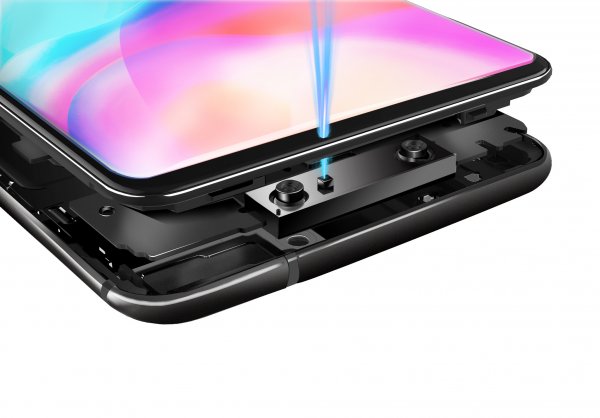Popular and innovative Chinese smrtphone brand Vivo has revealed its Time of Flight (TOF) 3D Sensing Technology at MWC Shanghai 2018. It promises a paradigm shift in imaging, AR and human-machine interaction, which will elevate consumer lifestyles with new levels of immersion and smart capability. It enables new opportunities in facial, gesture and motion recognition, 3D photography and AR, expanding the capabilities of the next generation of smart devices as stated by the company in its press statement.
 According to Vivo, its TOF 3D Sensing Technology features industry-leading performance in depth of information captured with its 300,000 sensor points, which is 10 times the number of existing Structured Light Technology. This raises the bar by enabling 3D mapping at up to three meters from the phone while having a smaller baseline than Structured Light. TOF 3D Sensing Technology is also simpler and smaller in structure and allows for more flexibility when embedded in a smartphone. This will enable much broader application of this technology than was previously possible.
According to Vivo, its TOF 3D Sensing Technology features industry-leading performance in depth of information captured with its 300,000 sensor points, which is 10 times the number of existing Structured Light Technology. This raises the bar by enabling 3D mapping at up to three meters from the phone while having a smaller baseline than Structured Light. TOF 3D Sensing Technology is also simpler and smaller in structure and allows for more flexibility when embedded in a smartphone. This will enable much broader application of this technology than was previously possible.
This technology is tested and meets industry standards required for integration with current apps soon. Beyond facial recognition, TOF 3D Sensing Technology will open up new possibilities for entertainment as well as work as claimed by Vivo.
Through precise and accurate tracking of gestures and movements of the user’s entire body, TOF 3D Sensing Technology creates entirely new ways to interact with and experience the world. Using AI to beautify a photo according to the entire person is a whole step above current photography applications. Merging this technology with AR capabilities could take users one step further and allow them to try on clothes virtually with enhanced 3D virtual fitting. It can also track gestures for mixed reality (MR) games and provide an entire new way to immerse yourself in a virtual world through MR games, adds the statement of the company.
By combining AI recognition with TOF 3D Sensing Technology’s precise understanding of what it sees, users can even capture entire objects using 3D modelling. Users can therefore scan and recreate entire objects digitally. This technology can be used to scan lesson props for education, or even help scan critical parts of the body for medical purposes as further stated by Vivo.
“From last year’s debut of In-Display Fingerprint Scanning Technology, the recent launch of the truly bezel-less Vivo NEX, to our ground-breaking TOF 3D Sensing technology, we continue to forge ahead and evolve towards the truly intelligent future by opening new ways for the AI to help the consumer,” said Alex Feng, Senior Vice President of Vivo. “By combining TOF 3D Sensing Technology with AI, we will continue to explore new possibilities for a better future.”



















